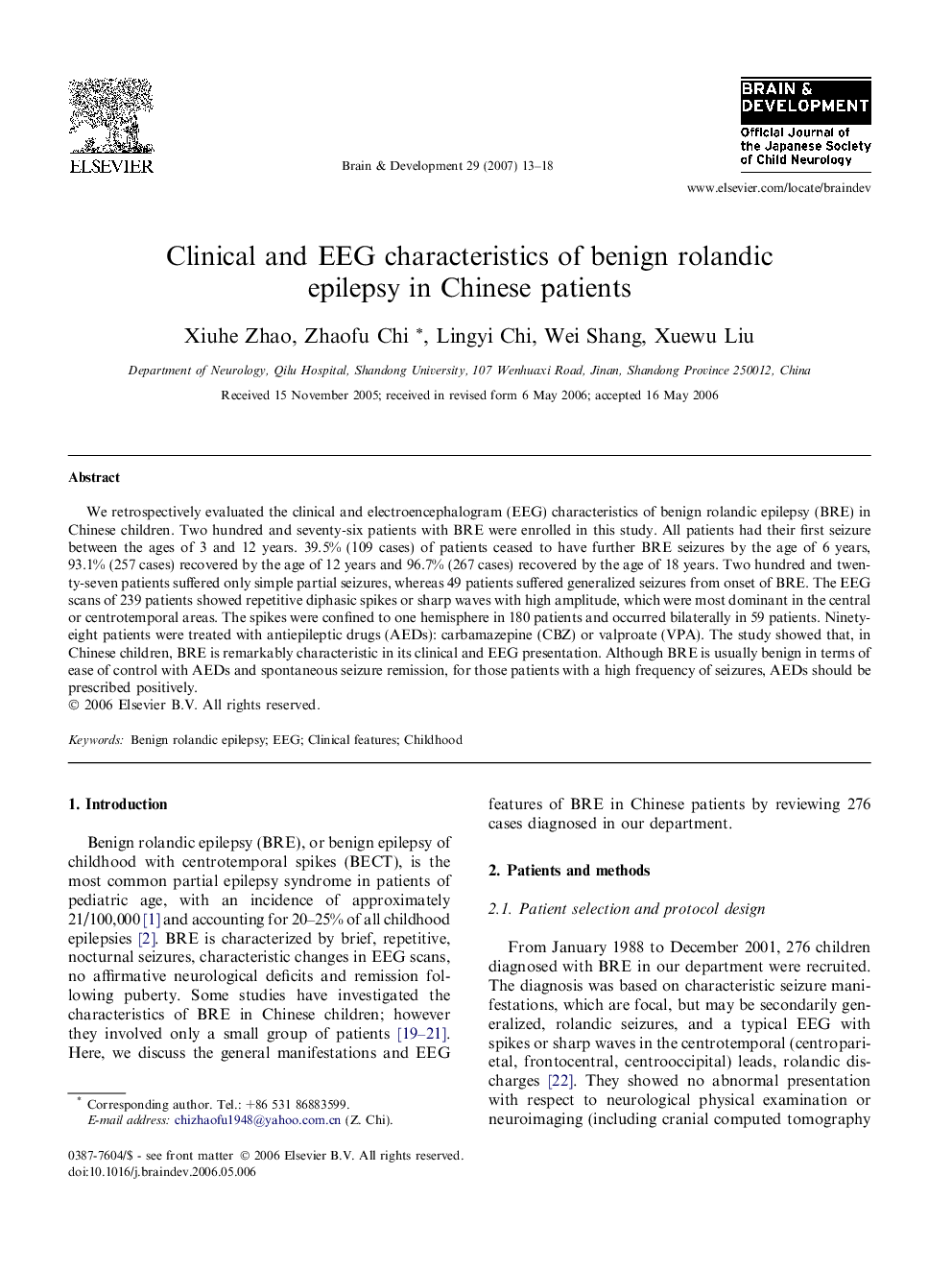| Article ID | Journal | Published Year | Pages | File Type |
|---|---|---|---|---|
| 3038492 | Brain and Development | 2007 | 6 Pages |
We retrospectively evaluated the clinical and electroencephalogram (EEG) characteristics of benign rolandic epilepsy (BRE) in Chinese children. Two hundred and seventy-six patients with BRE were enrolled in this study. All patients had their first seizure between the ages of 3 and 12 years. 39.5% (109 cases) of patients ceased to have further BRE seizures by the age of 6 years, 93.1% (257 cases) recovered by the age of 12 years and 96.7% (267 cases) recovered by the age of 18 years. Two hundred and twenty-seven patients suffered only simple partial seizures, whereas 49 patients suffered generalized seizures from onset of BRE. The EEG scans of 239 patients showed repetitive diphasic spikes or sharp waves with high amplitude, which were most dominant in the central or centrotemporal areas. The spikes were confined to one hemisphere in 180 patients and occurred bilaterally in 59 patients. Ninety-eight patients were treated with antiepileptic drugs (AEDs): carbamazepine (CBZ) or valproate (VPA). The study showed that, in Chinese children, BRE is remarkably characteristic in its clinical and EEG presentation. Although BRE is usually benign in terms of ease of control with AEDs and spontaneous seizure remission, for those patients with a high frequency of seizures, AEDs should be prescribed positively.
